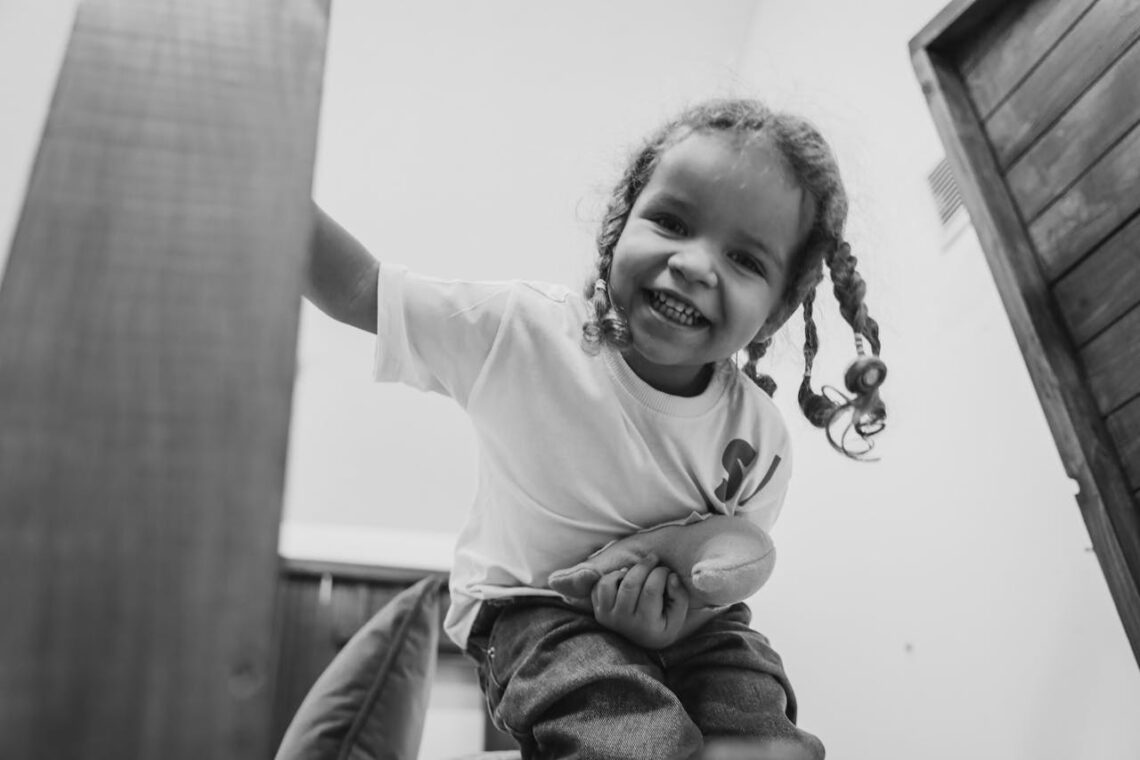
Unstructured Play: 7 Ideas To Help Your Kids Unwind And Boost Creativity
Remember those days when kids would spend hours exploring outdoors without a set plan? Today, this kind of free wandering can sometimes be seen as unproductive or even unsafe. What are they doing? Nothing? Nope, they’re playing! Child-led unstructured play (aka free, spontaneous, or adventure play) that doesn’t involve any organization from adults or any predetermined purpose/outcome is crucial for kids’ development. It is a training ground for resilience, creativity, and social skills that blossom through natural interaction.
Unstructured play activities are becoming less and less popular among parents obsessed with education and safety. And yet, for working moms craving to release their milestone tension, unstructured play can be a blissful and deliberating quality time option. At the end of a busy day, after the daycare’s got the education covered, unstructured play is a perfect way for both you and a child to let off steam and connect.
So let’s dive deeper into the topic and explore the benefits of unstructured play to see how we can bring back some of that unstructured magic for our crew, even in this more cautious and hectic world.
Why is unstructured play at risk in today’s kids’ lives?
When I was a child (1990s), playtime wasn’t a scheduled activity on the calendar – it was the rhythm of our days. From the moment the school bell rang to the fireflies twinkling at dusk, I was given the freedom to unleash with friends outside. Our playground was vast, a constantly negotiated border between our neighborhood and our imaginations.
We weren’t confined to plastic toys, expensive gadgets, or pre-programmed games. We were a roaming pack of kids, the supervisors of our own fun, exploring, building, and storytelling all the time, fueled by sticks, rocks, and whatever our boundless creativity conjured.
It was a simpler time, for sure, but one that instilled a sense of independence, resilience, and a love for the outdoors that I carry with me today.
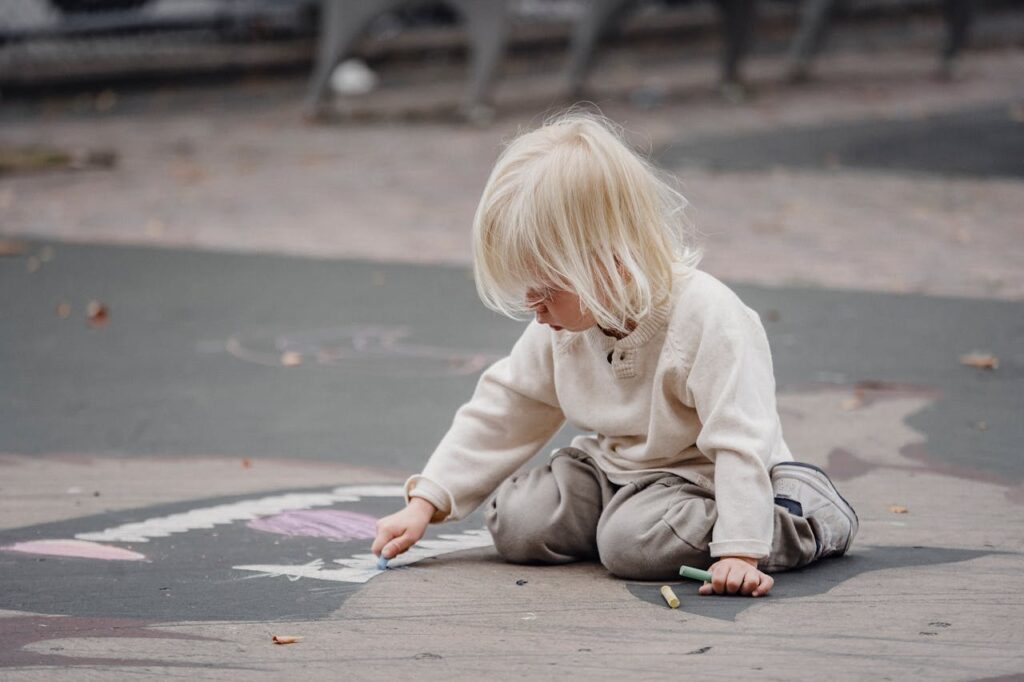
As working moms, our calendars are bursting – football, music lessons, ballet… you name it. Lia Karten from the University of Amsterdam calls today’s kids “backseat children” for being passively moved from one structured parent-led activity to another. While these activities are enriching, sometimes it feels like there’s no room for the free play we remember from our childhood.
Dr. Howard Chudacoff, a researcher, hits the nail on the head. He points out that our busy schedules are just one of the many factors impacting unstructured play. Today’s focus on structured adult-led activities (clubs, sports, etc.), pre-made toys, excessive emphasis on academic performance, and limited outdoor time all led to a major decline in unstructured play in early childhood.
What takes free, unstructured play away from our kids?
The dilemma of structured vs unstructured play in early childhood is greatly dictated by the rise of the “stranger danger”. Fear – of crime, traffic, and even other people’s kids – has shrunk the world for our little ones. They spend less time exploring at home and school, and more time stuck inside or in organized activities. The freedom to just be kids, to get a little dirty and figure things out on their own, seems to be fading fast. It’s a far cry from my own days spent roaming free with just a stick or contemplating a bug in a puddle.
Listen, the whole “control vs. freedom” dance with kids is nothing new, right? But lately, it feels like we busy parents are white-knuckling it more than ever. Maybe it’s the pressure to make every minute with them count, or the fear of something happening when we’re not around… Whatever it is, I just wish we could all loosen our grips a little.
Unstructured play benefits: why it’s a win for working moms too!
1. Creativity spurt
We all know the feeling of staring at a blank page, right? Well, boredom in small doses can be a good thing! Unstructured play gives our kids the space to be creative. They get to turn that stick into a magic wand, a pile of blankets into a fort, or a bucket into… well, you get the idea. It sparks their imagination and problem-solving skills, all without us needing to direct the fun.
2. Tiny diplomats in training
Think a playground without rules is chaos? Sure, sometimes it gets loud, but beneath the surface, they’re learning valuable democratic skills. Negotiating roles, taking turns, and working together – all happening naturally as they play. It’s like witnessing tiny diplomats in action, figuring things out on their own. Plus, it reinforces all the lessons we try to teach them about fairness and sharing.
3. Building strong communicators
Remember that saying, “Monkey see, monkey do”? It applies to language too! Unstructured play is a goldmine for communication. They’re constantly talking, explaining their ideas, and figuring things out together. This helps them develop their vocabulary, express themselves clearly, and understand different perspectives.
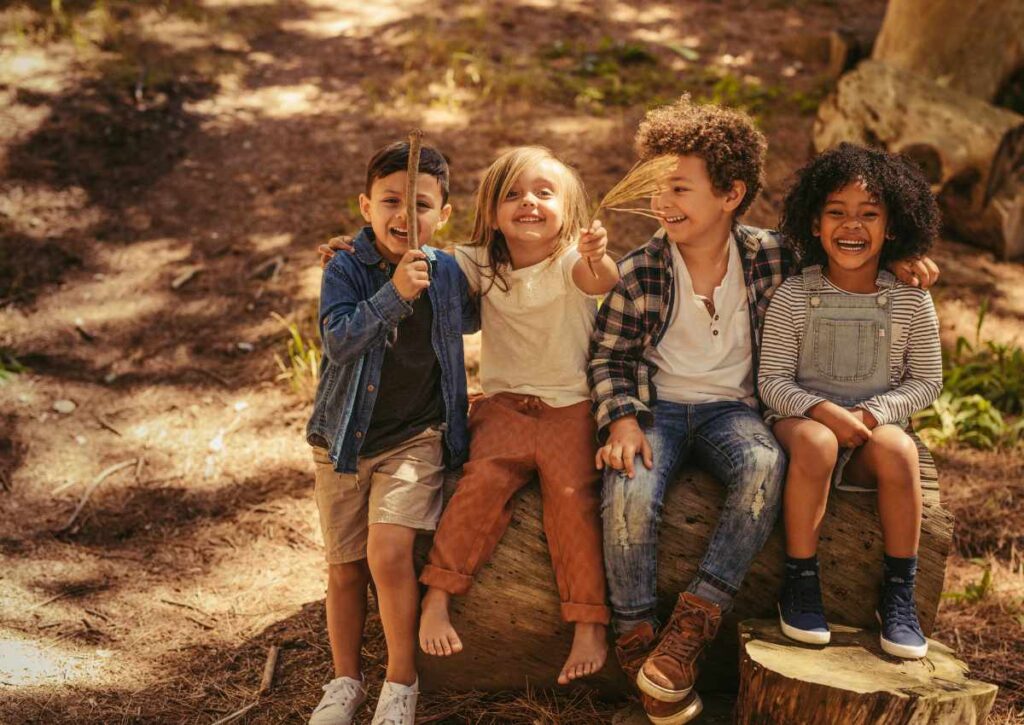
4. Raising resilient rockstars
Let’s face it, life isn’t always sunshine and rainbows. Unstructured play allows them to experience a range of emotions, from frustration to confusion, and even failure. But here’s the thing: they learn to bounce back. By figuring things out on their own, they build resilience and a sense of “I can do this!”. These are some of the most important life skills they can learn, and guess what? We don’t even need to be the superheroes who fix everything.
5. Taking a (mental) breath
We all need downtime, and so do our kids! Unstructured play allows them to release pent-up energy, whether it’s running around outside or getting lost in a world of their own creation. This “break” helps them recharge and come back to structured activities with a fresh mind. Plus, fewer meltdowns for them means less stress for us!
6. Self-regulation champs
Remember that helicopter parent stereotype? Unstructured play lets kids explore and make mistakes in a safe environment. They learn to assess risks and manage themselves, becoming little self-regulation champions without us needing to constantly hover.
7. Building strong bodies
Unstructured play isn’t just about imagination. It’s about getting those wiggles out! Running around, climbing, and exploring the world helps them develop strength, coordination, and overall fitness. Think of it as a fun way to fight off childhood obesity.
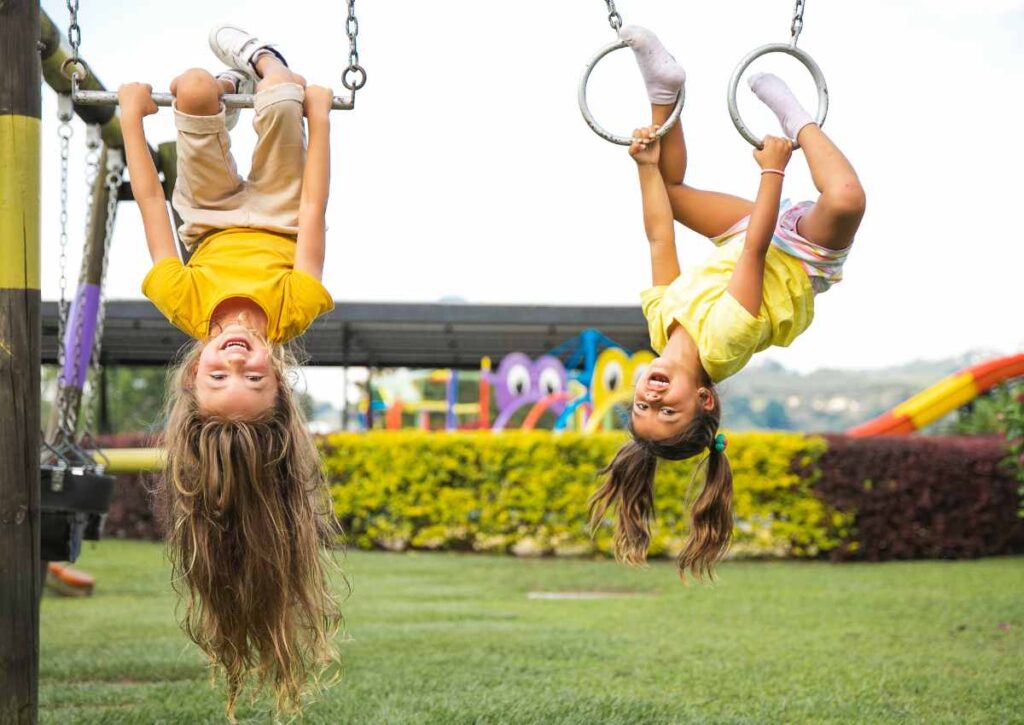
8. Mom’s recharge time
For busy working moms, unstructured play offers a hidden gem: a chance to recharge alongside your child. Unstructured play activities allow them to take the lead, freeing you from the pressure to constantly plan or entertain. It’s a win-win – they get to explore their creativity and independence, while you can relax and maybe even sneak in a few moments of peace.
Look, I’m not saying we ditch all routines. But by carving out some time for unstructured play activities, we’re giving them the space to grow, learn, and most importantly, just be kids. And let’s be honest, a little less pressure on ourselves can’t hurt either, right?
Disadvantages of unstructured play
- Getting stuck in a rut. Kids might repeat the same play patterns, limiting their learning potential. We can help by introducing new play spaces or rotating toys to keep things fresh.
- Missing out on challenges. Structured activities can push them to learn new things. We can find a balance by incorporating some guided play where we offer gentle challenges (for example, try my collection of 33 sharing activities) within unstructured playtime.
- Fairness concerns. Unstructured environments can sometimes lead to social issues, especially for shy kids. We can create a foundation for fairness by teaching good play behaviors beforehand and keeping an eye on interactions.
- Safety worries. Letting them explore freely can be nerve-wracking. We can find safe spaces for unstructured play and establish clear boundaries to manage risks.
- Limited language growth. Unstructured play is great for communication, but they also need exposure to more complex language from adults. We can chat with them about their play experiences and introduce new vocabulary during playtime.
Unstructured play is still incredibly valuable!
However, being aware of these potential drawbacks can help us navigate them and create a well-rounded play experience for our kids. We don’t need to be perfect, just present and engaged!
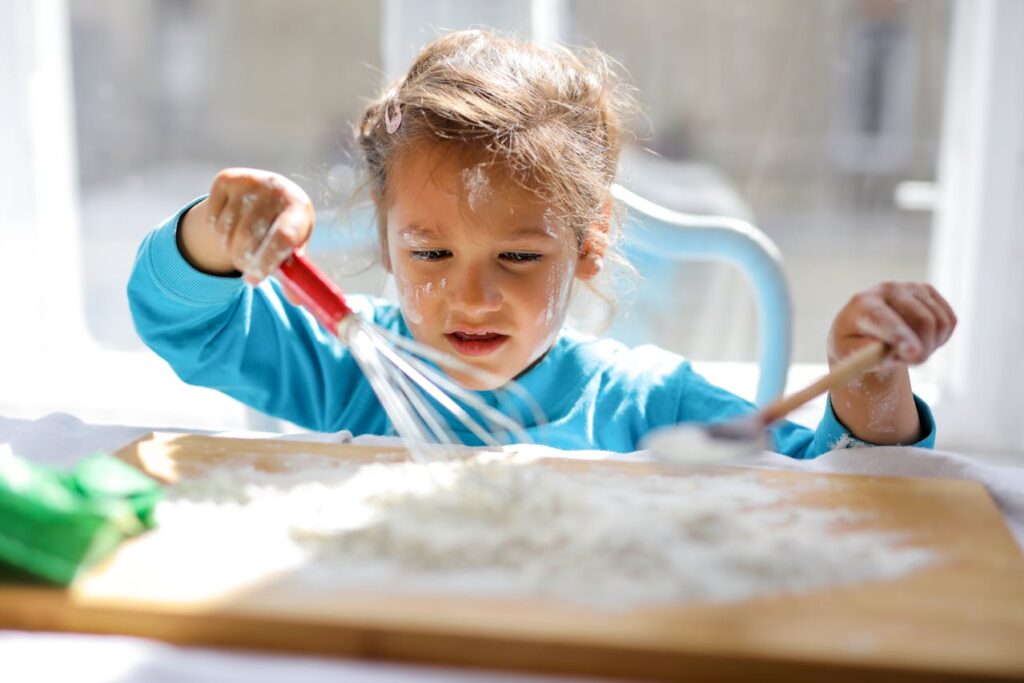
This post contains affiliate links to products, helping me to earn a small commission for purchases made through them, at no additional cost to you. See the full affiliate disclaimer here.
7 Unstructured play ideas for kids to boost creativity and unwind
So what are the examples of unstructured play? Unstructured play ideas can be a tricky wording because since unstructured play is a child-initiated playtime that happens without parent’s intervention, our list of unstructured play ideas will contain suggestions for parents on how to encourage unstructured play activities rather than ideas on what kids should do (be sure they already have their own ideas!).
1. Let them be the boss of their playtime!
This might be the toughest one, mama! Unstructured play means letting go of the reins and helping them unleash their inner director. It’s their chance to explore their creativity, make decisions, and even take the lead (even if it’s just leading themselves!).
Instead of swooping in and directing the fun, resist the urge to take over. If your little one decides to turn the living room couch into a spaceship using your new blankets for sails, that’s amazing! Don’t correct them. Instead, support their imaginative vision, “Hey I didn’t know it was a spaceship, but now I see!” You can always clean up together later, and who knows, you might discover a whole new galaxy hidden in your living room!
For younger kiddos who might need a spark to ignite their imaginations, you can gently “scaffold” their play. Act out a daring rescue mission with them using stuffed animals or whisper a funny sound effect as they zoom their toy car around the house.
2. Let imagination take flight with pretend play!
Unlike board games with set instructions, pretend play is where unstructured fun takes off as it lets your kid be the writer, director, and star of their epic show!
Whether it’s transforming couch cushions and blankets into a magnificent fort, turning pots and pans into a rockin’ band’s instruments, or using sticks and pinecones to build a fairy village, pretend play lets them explore endless possibilities.
Pretend play helps kids see the world in a new light, discovering multiple uses for everyday objects. Plus, you don’t need fancy toys to get started!
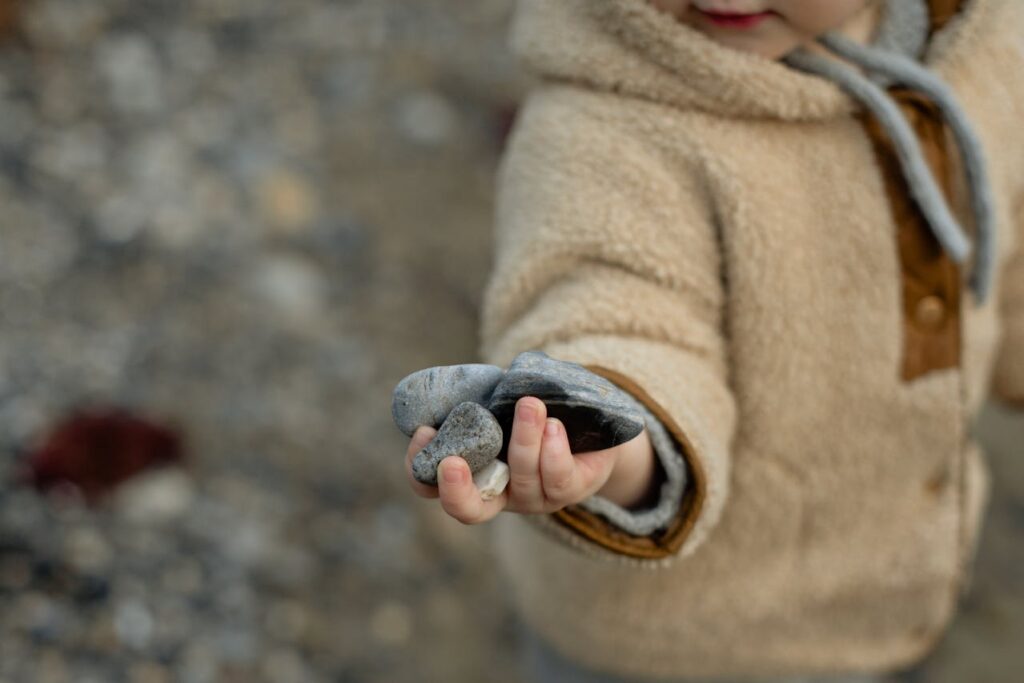
3. Encourage them to explore the neighborhood!
To truly experience the power of unstructured time, ditch the screens and encourage your little explorer to roam free in nature. This is the simplest and most obvious unstructured play example. Head to a new park for a picnic, play frisbee (or an LED Flying Disc when it’s dark), let them loose in your backyard collecting stones, leaves, or bugs, or even hit the sidewalk with some colored chalk and transform it into a masterpiece.
No fancy equipment is needed! Even your driveway or backyard can become a training ground for future explorers, with obstacle courses made from household items. Your role as a mom is to be their safety net while they unleash their creativity.
If you live near the sea/river/lake and often go on beach trips, this seashell watercolor painting activity is an amazing idea for adding creativity and color to your beach time. Another benefit is that you don’t have to worry about watercoloring getting messy. Because nature and free play are where watercolors fit best! Just collect some seashells, splash some water into the paints, step back, and let your kid’s imagination blossom under the open sky!
4. Introduce digital playdates
Screen time can be a tempting babysitter, but what about turning it into a launching pad for fun? Set up virtual playdates over Google Meet or FaceTime where your child and a friend can build epic Lego creations and show them off to each other. Explore online versions of board games they can play together. Even get creative with video calls – encourage your child to tell stories to their grandparents or share artwork with friends virtually.
5. Add play to every day!
Playtime doesn’t have to stop at bath time! Everyday tasks can be a springboard for imaginative adventures. Need a sous chef for dinner? Let your little one help with food prep, adding a splash of creativity with colorful sprinkles! Planting a garden? Turn it into their own pretend farm, complete with tiny scarecrows and fairy gardens.
By incorporating playfulness into everyday tasks, you’re not just getting a helping hand, you’re teaching valuable skills like math and teamwork, all while fostering a sense of accomplishment and contribution to the household. It’s a win-win for everyone!
6. Prepare the “Unstructured Play Box”!
Want to encourage independent playtime without the screen siren song? Make it easy for them to dive into imaginative fun with a dedicated “Unstructured Play Box” filled with open-ended goodies to spark their imaginations. Here are some ideas to get you started:
- Craftastic supplies. Paper, markers, yarn, toilet paper rolls, cardboard scraps – the possibilities are endless! Throw in some googly eyes, glitter glue, and colorful tissue paper for an extra dose of whimsy.
- Nature’s playground. Fill the box with pinecones, pebbles, and dried flowers for nature-inspired creations. Snowflake stencils in winter or colorful leaves in fall add a seasonal touch!
- Dress-up extravaganza. Fuel their pretend play with fun costumes, crowns, hats, and anything else that sparks their imagination. Doctor kit? Firefighter helmet? Let their inner role model shine!
- Loose parts. This category encompasses everyday objects that can be repurposed for imaginative play. Think cardboard boxes, tubes, buttons, bottle caps, and fabric scraps. Loose parts allow children to think outside the box, creating new uses for familiar objects and fostering problem-solving skills. (This point explained to me why all “toys” my kids loved playing with most reminded trash, LOL.)
With this box of open-ended goodies by their side, your child will be well on their way to hours of independent, imaginative play!
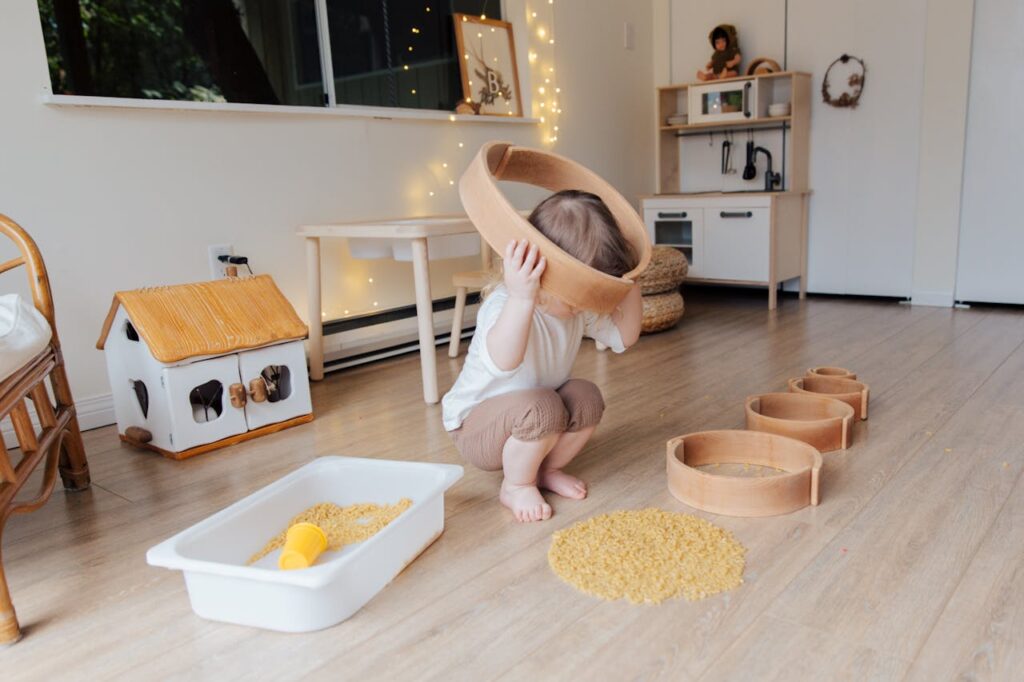
7. Fuel their imagination with the right toys
Unstructured play doesn’t have to be all DIY! There are some amazing toys specifically designed to spark creativity and open-ended fun. Here are a few of my favorites to get you started:
- LEGO (and LEGO Duplo for younger kids). The classic building block for a reason! LEGO’s endless possibilities let them build anything from spaceships to robot friends, all while developing problem-solving and fine motor skills.
- Big Building Blocks. Jumbo blocks like Little Tikes Big Waffle Blocks or BiggoBlocks Jumbo Blocks are perfect for little hands and big imaginations. They can create towers, forts, or even entire cityscapes, all while encouraging spatial reasoning and gross motor skills.
- Magnetic Tiles. MAGNA-Tiles and similar magnetic building sets add a whole new dimension to construction play! Kids can build towering structures that defy gravity, sparking creativity and critical thinking.
- Temi Flower Garden building set. Watch imaginations bloom with this versatile flower garden building set. Featuring interchangeable butterflies, flowers, stems, and leaves, kids can create endless combinations. This hands-on toy encourages creativity, fine motor skills, and a love for nature. The best present for girls, IMHO.
- Clixo magnetic toys. Clixo sets offer a fun twist on building with their unique, interconnecting pieces. They can create everything from wacky animals to fantastical creatures, all while promoting dexterity and hand-eye coordination.
- Play-Doh. This squishy, colorful dough sparks endless creativity! Kids can mold it into anything they imagine, from fantastical creatures to familiar objects. Play-Doh encourages open-ended play, allowing them to explore textures, shapes, and colors freely.
- Watercolors and paper. These classic art supplies unleash a world of artistic exploration. Kids can experiment with color mixing, blending, and creating unique designs. The beauty of watercolors is their unpredictability, encouraging creativity and problem-solving as they learn to control the flow of water and paint.
Remember: When choosing toys for unstructured play, focus on open-ended options that can be used in countless ways.
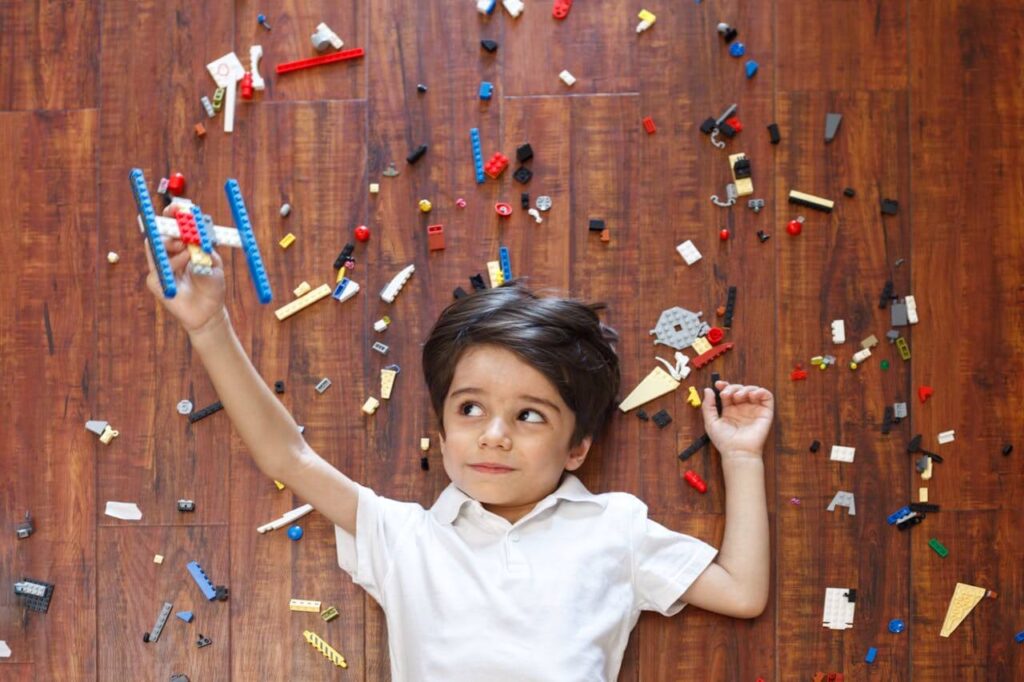
We all need some unstructured play…
A working mom’s life can get really tough, and quality time with your little one can feel like a luxury between work deadlines and soccer practice.
But here’s the secret:
Quality time doesn’t have to be perfectly planned or jam-packed with activities. In fact, unstructured play might be the key to reconnecting and relaxing together.
Unstructured play activities allows your child to explore their world at their own pace, make their own decisions, and become the director of their own imaginative play. It’s a chance for them to recharge and come back to structured activities feeling refreshed and ready to learn.
Remember, balance is key. While unstructured play is amazing, don’t ditch structured activities altogether! Think of it like a dessert (you still need healthy structured activities for a well-rounded diet). Check out our post on sharing activities if you are raising toddlers.
So, this summer break, why not ditch the screens and embrace the power of play? Fill your days with a mix of unstructured playtime, engaging activities, and maybe even a sneaky nap or two for you. After all, happy, well-rested moms and creatively charged kids? That’s a recipe for a fantastic summer!
If you loved this post on unstructured play, grab more inspiration:
33 Sharing Activities For Toddlers: Shaping Little Empaths With Big Hearts
Christian Christmas Books for Kids Centring Little Hearts on Jesus
Ignite the Spark: How to Show Love To Your Husband the Way He Craves
Solo Date Ideas For Overwhelmed Moms to Reclaim That Elusive “Me Time”


2 Comments
Ana
I absolutely love this post! I couldn’t agree more—FREE play is truly the secret sauce for connecting with our kids. It’s amazing how those unstructured moments can spark creativity and strengthen our bonds!